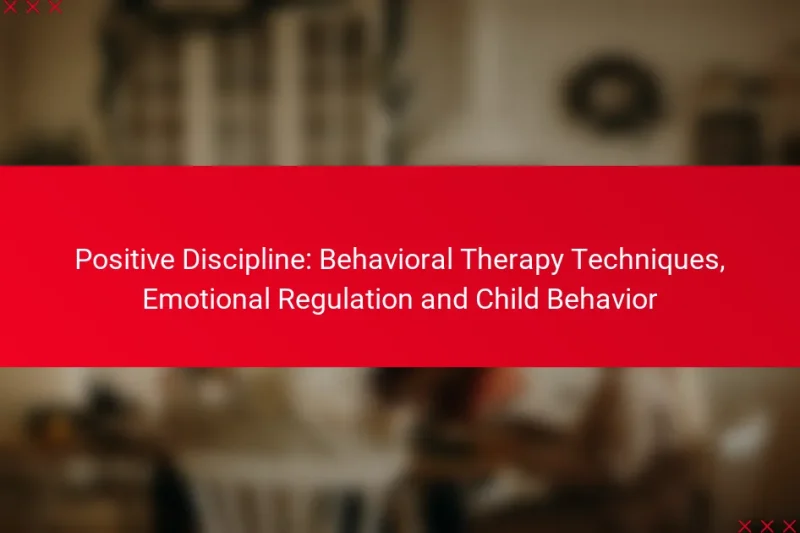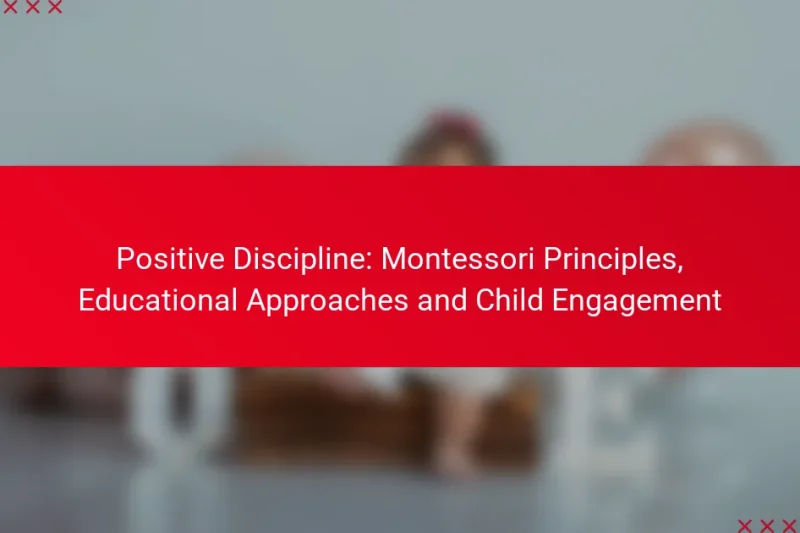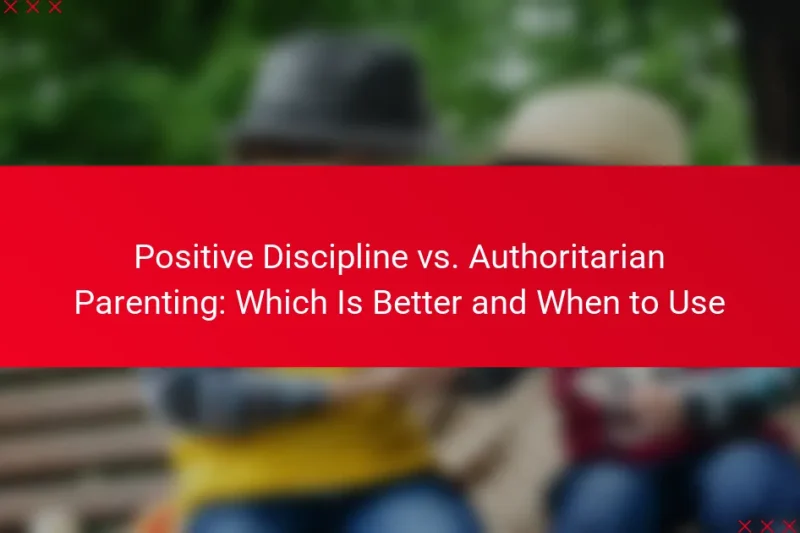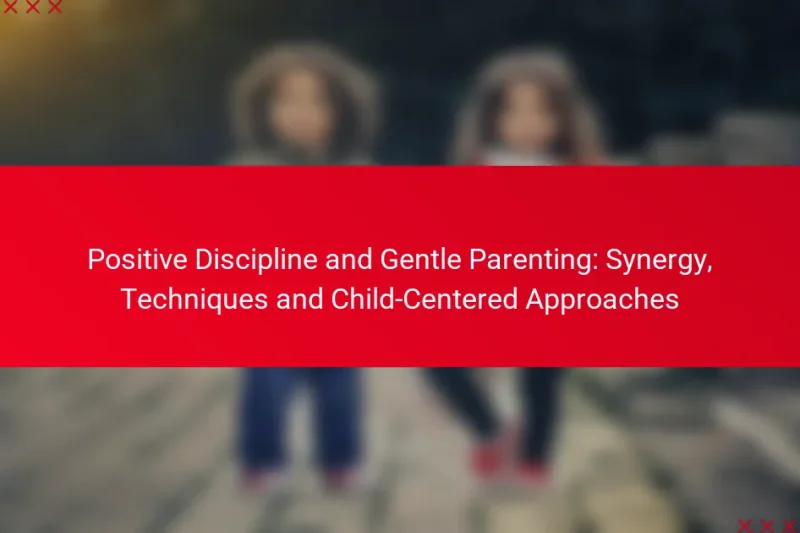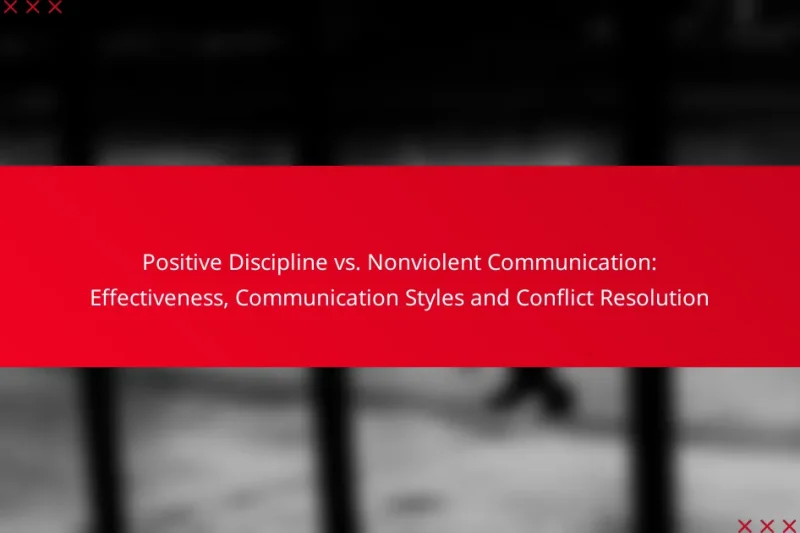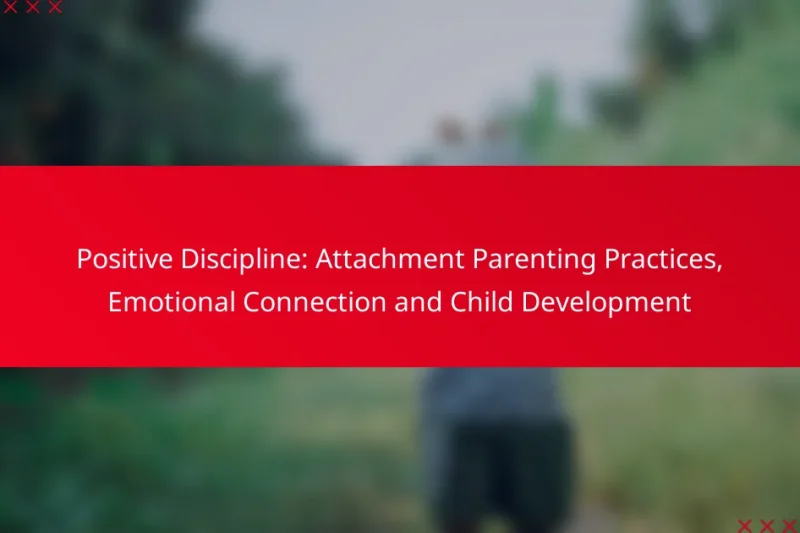Positive discipline emphasizes guiding children’s behavior through supportive and constructive methods rather than punishment. By fostering … Positive Discipline: Behavioral Therapy Techniques, Emotional Regulation and Child BehaviorRead more
Comparative Approaches to Positive Discipline Strategies
Comparative approaches to positive discipline strategies emphasize teaching appropriate behaviors through guidance rather than punishment. These methods create a respectful environment that nurtures self-discipline and accountability, leading to improved behavioral outcomes in children and adolescents.
Positive Discipline: Montessori Principles, Educational Approaches and Child Engagement
Positive Discipline aligns seamlessly with Montessori principles by creating a nurturing atmosphere that values respect, autonomy, … Positive Discipline: Montessori Principles, Educational Approaches and Child EngagementRead more
Positive Discipline vs. Authoritarian Parenting: Which Is Better and When to Use
Positive Discipline and Authoritarian Parenting are two contrasting methods of raising children, each with its own … Positive Discipline vs. Authoritarian Parenting: Which Is Better and When to UseRead more
Positive Discipline and Gentle Parenting: Synergy, Techniques and Child-Centered Approaches
Positive Discipline and Gentle Parenting are complementary approaches that prioritize respect, empathy, and understanding in the … Positive Discipline and Gentle Parenting: Synergy, Techniques and Child-Centered ApproachesRead more
Positive Discipline vs. Nonviolent Communication: Effectiveness, Communication Styles and Conflict Resolution
Positive Discipline and Nonviolent Communication (NVC) are two effective frameworks aimed at enhancing communication and resolving … Positive Discipline vs. Nonviolent Communication: Effectiveness, Communication Styles and Conflict ResolutionRead more
Positive Discipline: Attachment Parenting Practices, Emotional Connection and Child Development
Positive Discipline is an effective approach that enhances child development by creating a nurturing environment that … Positive Discipline: Attachment Parenting Practices, Emotional Connection and Child DevelopmentRead more
What are effective positive discipline strategies?
Effective positive discipline strategies focus on teaching children appropriate behaviors through guidance and support rather than punishment. These approaches foster a respectful environment that encourages self-discipline and accountability.
Restorative practices
Restorative practices emphasize repairing harm and restoring relationships rather than simply punishing misbehavior. This approach involves open dialogue, where children reflect on their actions and understand the impact on others. For instance, a student who disrupts a class might meet with the teacher and affected classmates to discuss the incident and agree on steps to make amends.
Implementing restorative practices can create a supportive atmosphere, but it requires commitment from all parties involved. Schools may need training for staff to facilitate these discussions effectively.
Positive reinforcement
Positive reinforcement involves acknowledging and rewarding desirable behaviors to encourage their recurrence. This can be done through verbal praise, tangible rewards, or privileges. For example, a child who completes their homework on time might receive extra playtime or a sticker.
While this strategy can be highly effective, it is essential to ensure that rewards are meaningful and not overused, as this can diminish their impact. Setting clear criteria for earning rewards helps maintain motivation.
Collaborative problem-solving
Collaborative problem-solving focuses on working together with children to identify issues and develop solutions. This approach empowers children by involving them in the decision-making process, fostering critical thinking and responsibility. For example, if a child struggles with sharing toys, parents can discuss the situation and brainstorm ways to take turns effectively.
This strategy requires patience and active listening, as it may take time for children to express their thoughts. Establishing a safe space for open communication is crucial for success.
Clear expectations and boundaries
Establishing clear expectations and boundaries helps children understand acceptable behaviors and the consequences of their actions. This involves setting specific rules and consistently enforcing them. For instance, a rule might state that all electronic devices must be put away during family meals.
Communicating these expectations clearly and revisiting them regularly can prevent misunderstandings. It is important to balance firmness with empathy, ensuring children feel supported while learning to navigate boundaries.
How do positive discipline strategies compare?
Positive discipline strategies vary in their methods and applications, focusing on teaching rather than punishing. These approaches emphasize respect, understanding, and guidance, leading to better behavioral outcomes in children and adolescents.
Differences in approach
Different positive discipline strategies can include techniques such as restorative practices, social-emotional learning, and behavior modification. Restorative practices focus on repairing harm and fostering accountability, while social-emotional learning emphasizes developing emotional intelligence and interpersonal skills. Behavior modification often uses reinforcement techniques to encourage positive actions.
Each approach has unique principles and methods, which may resonate differently with children based on their individual needs. For instance, some children may respond better to restorative practices that promote empathy, while others may thrive under structured behavior modification techniques.
Effectiveness in various settings
The effectiveness of positive discipline strategies can vary significantly across different environments, such as schools, homes, and community programs. In educational settings, strategies like social-emotional learning have shown to improve classroom behavior and academic performance. Conversely, at home, parents may find that restorative practices help build stronger relationships with their children.
When implementing these strategies, consider the context and the specific challenges faced. For example, a structured approach may work well in a classroom, while a more flexible, empathetic method may be necessary in family dynamics. Tailoring the approach to fit the environment can enhance its effectiveness and foster a supportive atmosphere for growth.
What are the benefits of positive discipline?
Positive discipline offers numerous advantages, including fostering a supportive learning environment and promoting respectful interactions. By focusing on guidance rather than punishment, it encourages students to develop self-discipline and responsibility.
Improved student behavior
Positive discipline strategies lead to improved student behavior by emphasizing understanding and communication. When students feel respected and valued, they are more likely to engage in appropriate behaviors and less likely to act out. Techniques such as setting clear expectations and providing constructive feedback can significantly reduce disruptive actions.
For example, implementing a reward system for positive behaviors can motivate students to adhere to classroom rules. This approach not only curbs negative behavior but also reinforces positive actions, creating a more conducive learning atmosphere.
Enhanced teacher-student relationships
Positive discipline fosters stronger relationships between teachers and students, as it encourages open dialogue and mutual respect. When teachers adopt a supportive approach, students are more likely to trust them and feel comfortable seeking help. This trust can lead to greater engagement and participation in class activities.
Building rapport through positive interactions, such as acknowledging students’ efforts or providing personalized feedback, can enhance these relationships. Teachers who actively listen and respond to students’ needs create a classroom environment where everyone feels valued.
Long-term emotional development
Implementing positive discipline contributes to long-term emotional development by teaching students essential life skills such as empathy, problem-solving, and self-regulation. These skills are crucial for navigating social situations and managing emotions effectively. By focusing on positive reinforcement, students learn to understand the impact of their actions on others.
For instance, incorporating conflict resolution strategies into the curriculum helps students develop the ability to handle disagreements constructively. Over time, these skills can lead to improved emotional intelligence, benefiting students in both academic and personal spheres.
What challenges do educators face with positive discipline?
Educators encounter several challenges when implementing positive discipline strategies, including student resistance, insufficient training, and inconsistent application of techniques. These obstacles can hinder the effectiveness of positive discipline, making it essential for educators to address them proactively.
Resistance from students
Student resistance is a common challenge that educators face when applying positive discipline. Many students may be accustomed to traditional disciplinary methods and may not respond well to new approaches that emphasize positive reinforcement and relationship-building.
To mitigate resistance, educators can involve students in discussions about the benefits of positive discipline and encourage them to share their thoughts. Building rapport and trust can also help students feel more comfortable with these strategies.
Lack of training
A significant barrier to effective positive discipline is the lack of training for educators. Many teachers may not have received adequate professional development on implementing these strategies, which can lead to confusion and inconsistent practices.
Educators should seek out workshops, seminars, or online courses focused on positive discipline techniques. Collaborating with experienced colleagues or mentors can also provide valuable insights and practical tips for successful implementation.
Inconsistent implementation
Inconsistent implementation of positive discipline strategies can undermine their effectiveness. When different educators apply varying approaches, students may become confused about expectations and consequences, leading to mixed messages.
To promote consistency, schools should establish clear guidelines and frameworks for positive discipline that all staff members agree to follow. Regular meetings and discussions can help ensure that everyone is on the same page and can share their experiences and challenges.
How can schools implement positive discipline effectively?
Schools can implement positive discipline effectively by establishing clear expectations, providing consistent support, and fostering a collaborative environment among staff, students, and parents. This approach emphasizes teaching appropriate behaviors rather than merely punishing misbehavior.
Staff training programs
Staff training programs are essential for equipping educators with the skills needed to implement positive discipline strategies. These programs should focus on conflict resolution, classroom management, and effective communication techniques. Regular workshops and professional development sessions can help reinforce these skills.
Consider incorporating role-playing scenarios and peer feedback into training sessions to enhance learning outcomes. Schools may also benefit from partnering with experts in positive discipline to provide tailored training that meets their specific needs.
Parent involvement initiatives
Engaging parents in positive discipline initiatives can significantly enhance their effectiveness. Schools should create opportunities for parents to participate in workshops that explain the principles of positive discipline and how they can reinforce these strategies at home. Regular communication through newsletters or meetings can keep parents informed and involved.
Additionally, establishing parent-teacher committees can foster collaboration and allow for shared experiences and strategies. Schools might consider organizing family events that promote positive behavior and strengthen community ties.
Creating a supportive school culture
Creating a supportive school culture is crucial for the success of positive discipline strategies. This involves promoting values such as respect, empathy, and responsibility among students and staff. Schools can achieve this by implementing programs that celebrate positive behavior and encourage peer support.
Regularly recognizing and rewarding positive behavior can motivate students to adhere to the established norms. Furthermore, involving students in decision-making processes can foster a sense of ownership and accountability, contributing to a more positive school environment.
What frameworks support positive discipline?
Positive discipline is supported by various frameworks that emphasize respect, responsibility, and problem-solving. These frameworks provide structured approaches to guide behavior without resorting to punitive measures, focusing instead on teaching and learning.
Positive Behavioral Interventions and Supports (PBIS)
PBIS is a proactive framework aimed at improving student behavior through a tiered system of support. It emphasizes the teaching of expected behaviors and provides positive reinforcement for meeting those expectations. Schools implementing PBIS often see a reduction in disciplinary incidents and an improvement in school climate.
Key steps in PBIS include defining clear behavioral expectations, teaching those expectations, and consistently acknowledging positive behavior. For example, a school might implement a reward system where students earn points for demonstrating respectful behavior, which they can exchange for privileges or small prizes.
Restorative Practices
Restorative practices focus on repairing harm and restoring relationships rather than punishing individuals. This approach encourages open dialogue and understanding among students, teachers, and parents, fostering a sense of community and accountability. It is particularly effective in addressing conflicts and behavioral issues.
In practice, restorative circles are often used to facilitate discussions about behavior and its impact. For instance, if a student disrupts class, a restorative circle might involve the student, the teacher, and affected peers discussing the incident and collaboratively finding a resolution.
Social-Emotional Learning (SEL)
Social-emotional learning (SEL) frameworks aim to develop students’ emotional intelligence, self-regulation, and interpersonal skills. By integrating SEL into the curriculum, educators can help students understand and manage their emotions, set positive goals, and establish healthy relationships.
Effective SEL programs often include activities that promote empathy, conflict resolution, and decision-making skills. For example, role-playing scenarios can help students practice responding to peer pressure or resolving disagreements in constructive ways.
